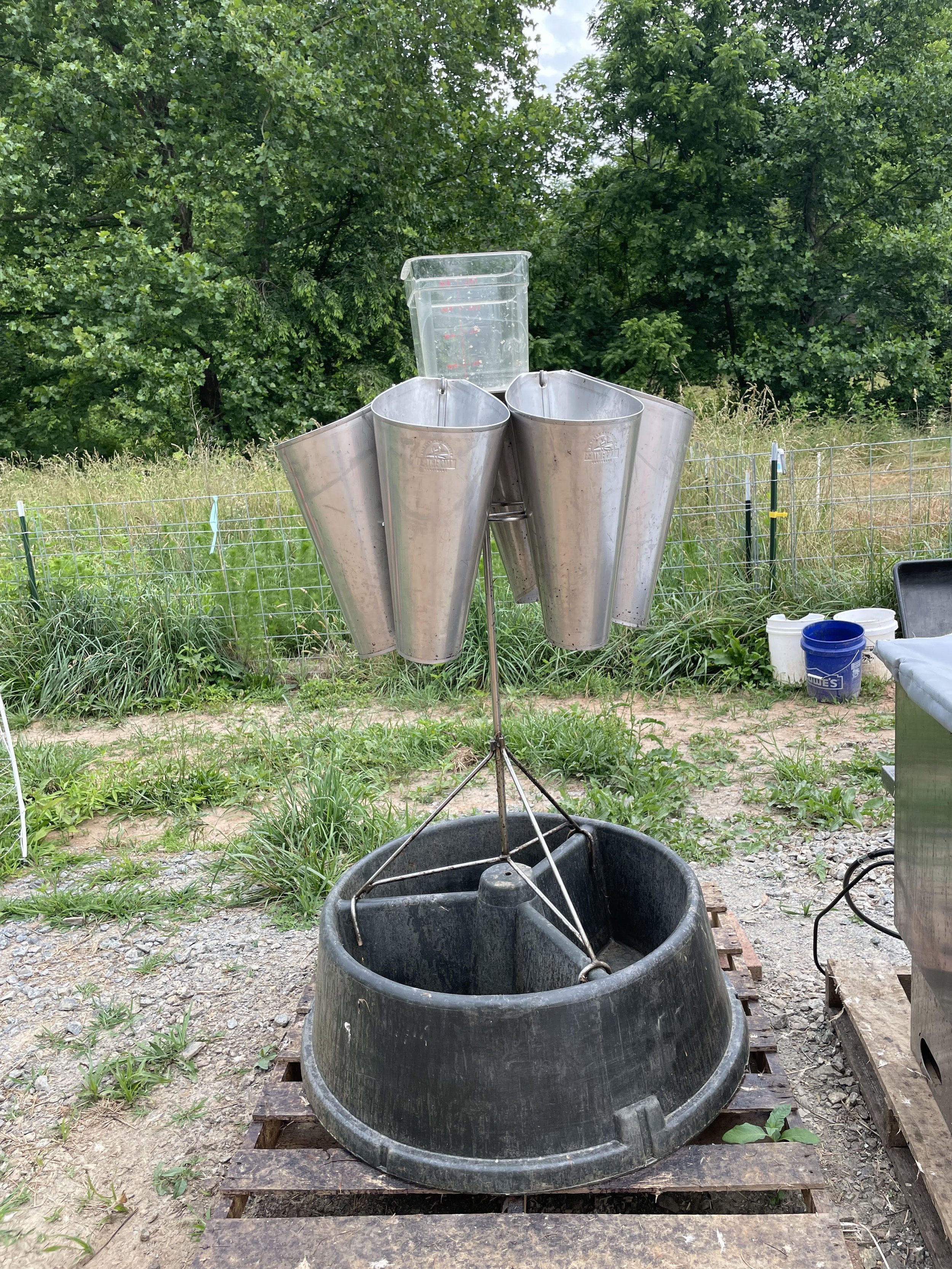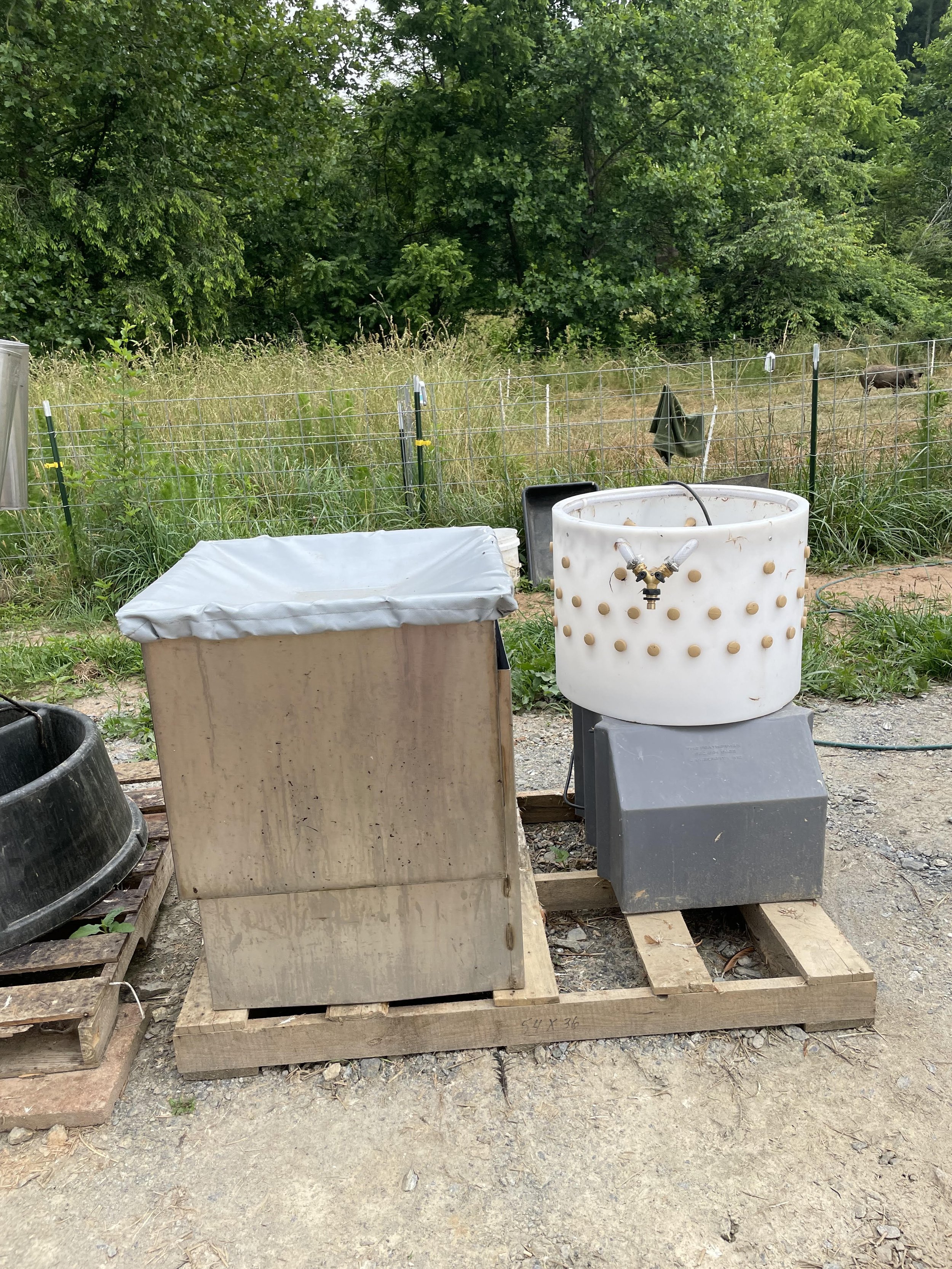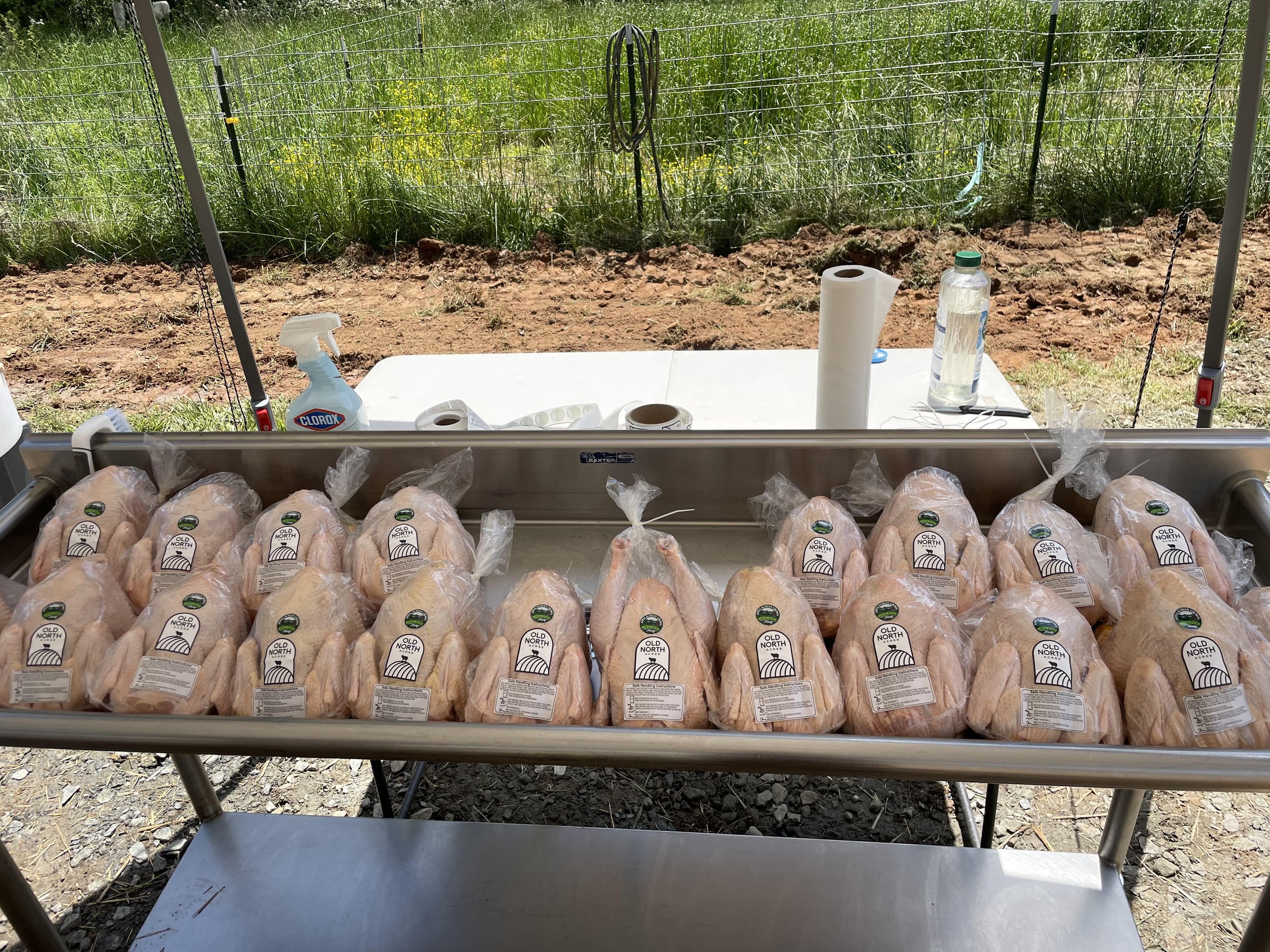Chicken Processing 101
This blog post overviews Old North Acres’ approach to processing chickens. We feel it’s important to share this information in an effort to help connect us to our food. In farming, death feeds life. Here’s what chicken processing is like for us!
Step 1: Kill cones
There’s no way to sugar coat this step folks. In order for delicious meat to end up on your plate, we have to kill the chickens we’ve gathered to be processed. These metal cones that hold the chickens look a lot like traffic cones, and we have 8 cones on a stand, with a blood catching bin below them. We flip each bird upside down in the cones, which creates a calming effect, and allows us to restrain the bird so they don’t injure themselves. Once the birds are in place, they are bled out with two precise incisions in their neck.
Dana and I have different techniques with this task, but the one thing we have in common is thanking each bird. Each bird served an important role on our farm, and will go on to provide people a delicious and nutritious meal.
Step 2: Scalding tank
Once the birds have been bled out, we take them over to the scalding tank. This tank holds roughly 30 gallons of water kept at around 145 degrees. We take two birds per hand, and submerge them repeatedly (10-12 times) to loosen the feathers.
Step 3: Plucking
Immediately after the birds have been dunked in the scalding tank, they are transferred to the plucker. We use a mechanical plucker, which allows us to pluck four to six birds at a time. The mechanical plucker is a big plastic tub lined with little rubber fingers. We drop the wet, feathery birds into the machine, turn it on, they rumble and tumble around for 60-90 seconds, and voilà! A naked chicken!
Step 4: Evisceration
Once we have our naked chicken, they are rinsed and ready to be eviscerated. The goal of evisceration is to remove the digestive tract and other inedible organs from the bird. This stage also requires care because we’re dealing with sharp objects (knives) around poop, which can contaminate the meat. We eviscerate the bird on a stainless steel table, which helps us maintain sanitary conditions. It’s pretty amazing how many parts of the chicken we get to save to minimize waste. We save feet, necks, hearts, livers, and gizzards for use in broths, pâté, and giblet snacks!
Step 5: Rinse and cooling
Our final step is rinsing the bird and then taking it over to our big chill tank. This tank is filled with ice and water, and allows the temperature of the carcass to cool before being put in a cooler for restaurant delivery, or packaged and frozen to sell to customers.
There are many other odds and ends mixed into this process, and it’s been a big learning curve to get proficient at humane small-scale poultry processing.
We are processing 75-100 birds a week at this point in the season, consisting of two processing days per week. Each processing day is a full day of hard work, but it’s humbling to be a part of the entire lifecycle of the chickens we raise. Slaughtering our birds ourselves instead of transporting to a processing facility allows us to minimize animal stress, maintain the highest meat quality, insure sanitary conditions, and deliver an outstanding product.



